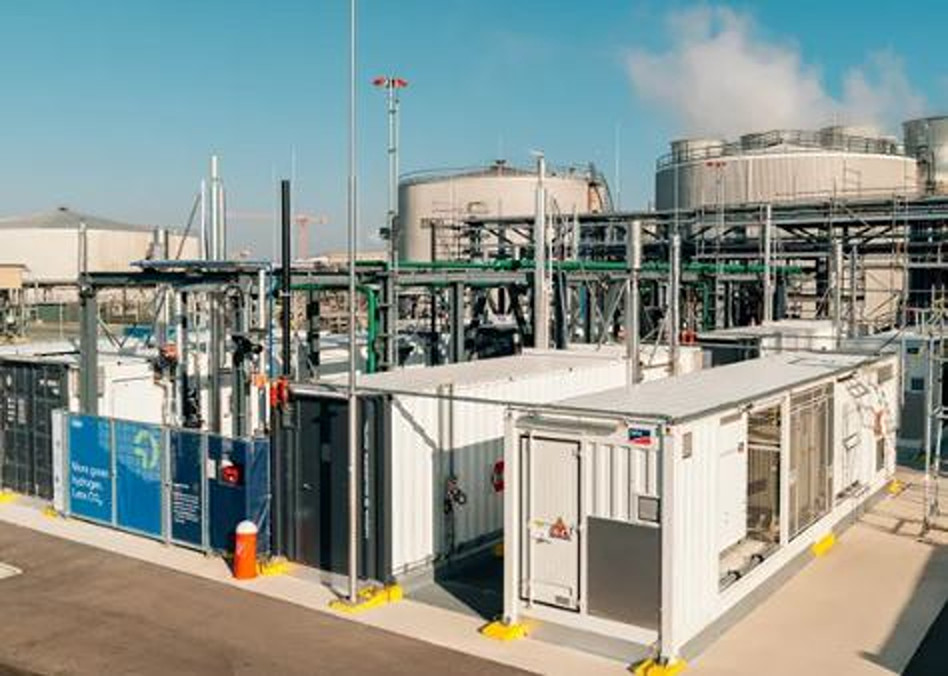OMV says that it has successfully started its 10 MW green hydrogen plant in the Schwechat refinery near Vienna, while the Austrian University TU Graz says that it has inaugurated a hydrogen electrolysis center on its Infeldgasse campus to develop and test hydrogen technologies.
OMV has announced the successful start-up of its 10 MW green hydrogen plant in the Schwechat refinery near Vienna, and calls it the largest installation of its kind in Austria. The Austrian oil and gas company said it invested € 25 million ($ 28.41 million) in the facility, which can produce up to 1500 tonnes of green hydrogen per year. The green hydrogen will be used to produce fuels and chemicals, including sustainable aviation fuel (SAF) and renewable diesel (HVO). The installation, which uses a polymer electrolytemembraan (PEM) electrolyzer, is entirely on renewable electricity from wind, hydro and solar sources.
TU Graz Has inaugurated a hydrogen electrolysis test center on its Inffeldgasse campus to develop and test hydrogen technologies. The university said that the facility of 250 square meters of electrolyzers with a total capacity contains 1.6 MW to 2.5 MW and includes a special transformer station to guarantee a stable power supply, allowing researchers to simulate various electricity scenarios. With 80 rod pressure, hydrogen flows through a pipeline to an 18-meter high storage tank with a capacity of 190 kg (48 m³). From there it travels via an underground pipeline from 315 meters to various institutions on campus Inffeldgasse, where it is around the clock for research. TU Graz said that researchers will use the hydrogen on new and improved test installations for large large engines, turbines, hydrogen burners and fuel cell stacks.
Wärtsilä Said it has completed the development of the world’s first floating ammonia to hydrogen cracker in collaboration with Höegh Evi. “With this breakthrough technology, floating import terminals can produce hydrogen on volumes on an industrial scale of transported ammonia, which marks an important step in the energy transition,” said The Finnish technology group. The ammonia cracker on an industrial scale has a modular design that makes it compatible with hybrid floating storage and regasification units (FSRUs) and special floating hydrogen terminals. It said that the technology is very scalable, with a shipping capacity of a maximum of 210,000 tons of hydrogen per year. Ammonia storage can vary from 10,000 m³ to 120,000 m³.
BMW has launched pilot operations of its first hydrogen cars in Plant Leipzig under the European H2HAUL project, together with IVECO, DHL and Teal Mobility. The German Automaker said The trucks will work in Germany between Leipzig, Landsberg and Nuremberg to assess the Drive performance in daily use, while new hydrogen filling stations are being built in Leipzig and Hormersdorf.
This content is protected by copyright and may not be reused. If you want to work with us and reuse part of our content, please contact: editors@pv-magazine.com.

